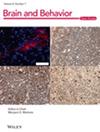Guillain–Barré syndrome (GBS), an acute inflammatory disorder of the peripheral nervous system, is characterized by muscle weakness and paralysis. Prompt identification of patients at a high risk of poor outcomes is crucial for timely intervention. In this study, we combined clinical data with nerve conduction study and electromyography data to identify the predictors of GBS outcomes.
We retrospectively analyzed the data of patients with GBS who had received treatment at Chang Gung Memorial Hospital, Taiwan, between 1998 and 2022. Comprehensive clinical and electrophysiological data were collected. Statistical analyses were performed to identify the predictors of poor outcomes. The patients were stratified into two groups by their scores on the GBS Disability Scale: good (score ≤ 2) and poor (score > 2) outcome groups.
The study finally included 24 GBS patients (mean age: 53.0 ± 20.9 years; female-to-male ratio: 2.3; good outcome group: 13; poor outcome group: 11). Compared with the good outcome group, the poor outcome group was old (43.0 ± 20.4 vs. 64.0 ± 15.7, p = 0.011), had a short time-to-treatment period (12.9 ± 7.8 vs. 6.5 ± 5.4 days, p = 0.033), exhibited more prevalent mechanical ventilation use (0 vs. 36.4%, p = 0.017), and had a prolonged hospitalization duration (14.7 ± 10.2 vs. 53.1 ± 20.0 days, p < 0.001). Poor outcomes were associated with low compound muscle action potential (CMAP), slow motor nerve conduction velocity (MNCV), abnormal F-wave latency, and more conduction block and temporal dispersion. In the subgroup of acute inflammatory demyelinating polyradiculoneuropathy (AIDP), there were 19 patients, out of which 10 had good outcomes, while nine had poor outcomes. The clinical features that differentiate between good and poor outcomes in the AIDP subgroup were similar to those observed in all GBS patients. Notably, the motor conduction features, including distal and proximal CMAP and MNCV of the median and tibial nerves (all p < 0.05), were particularly important electrodiagnostic features of outcome discrimination in the AIDP subgroup.
Combining clinical data with nerve conduction study and electromyography data can assist in predicting outcomes of both GBS patients and the AIDP subgroup. Poor outcomes are associated with older age, a more abrupt onset pattern, low CMAP, and slow nerve conduction, and abnormal tibial F responses can predict poor outcomes. Early identification of high-risk patients facilitates tailored interventions. This highlights the importance of combining clinical and electrophysiological data in GBS management.



